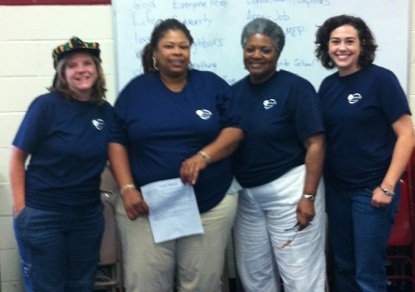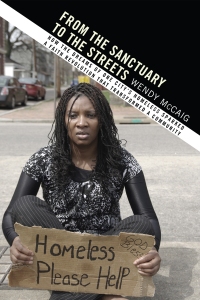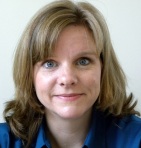
As a part of Courtney’s senior project, she wrote a paper titled, “A Wider Net: Beyond the Walls and the Possibilities that Lie Before Us.” In this paper she studies her affluent home church located in Jackson, Mississippi, ironically named Northminister Baptist Church. Courtney writes, “I was interested in how a congregation initially interested in expanding their own physical facilities was formed by context, sermons, as well as ministerial and lay leadership to make a significant commitment to an inner-city ministry.” Courtney has granted me permission to share her insights, which appear below, as a part of my series on Kingdom Churches.
Northminster Baptist church of Jackson Mississippi was formed in 1967. In 1998, as the church was contemplating a building project, Senior Pastor Chuck Poole issued a challenge – a dollar for dollar mission’s commitment. Courtney writes, “For Poole, it was difficult to see how “in light of the Gospel” the congregation should make themselves more comfortable for one hour per week in a city where “there are people who are never comfortable.” Can I get an “Amen!”?
The planning committee accepted the challenge and appointed an ad hoc “Special Missions Project Committee” whose proposal would be presented as a part of the combined recommendations of the Building Committee “in recognition that the expansion of the church facilities and a mission effort were theologically connected.” Another “Amen!”
In June 2001, the joint recommendation of these committees were approved and named “A Wider Net.” The vision was “a wider place to gather within our walls as well as a wider embrace of others beyond our walls.” The proposal from the Missions Committee included the desire to focus the church ministry efforts on a neighborhood called Mid-City . It also called the church to commit to, “A Person. A Place. A Ministry.”, within Mid-City.
In its commitment to “a person” the church wisely understood that real transformative ministry requires relationship building. The church committed to funding a “Community Minister” to serve as a bridge between the Mid-City and the church. The church affirmed the importance of physical presence by committing to “a place” within the community where relational ministry could happen. By supporting “a ministry”, the congregation used its financial and volunteer base to expand the capacity of work that was already happening in the community through various other organizations. This commitment to “a person, a place and a ministry” is absolutely brilliant and consistent with ever successful example of community transformation I have ever seen. However, I have never seen it stated so simply.
Courtney’s historical account details how the church faithfully carried out its commitment by hiring a community pastor who began listening to and visiting the residents regularly. Community ministries were identified and the church became an important strategic partner for many. Most importantly, the people of Northminster began to volunteer and through their presence brought about positive neighborhood change. Volunteers got involved in community safety projects, housing rehabilitation, summer kids camps, care for the elderly, and community building events. Courtney shares in her paper that important transformation happened at both a community level and a church level as transformative relationships formed.
In her assessment, Courtney points to the importance of theological education in this process. She writes, “On Sunday mornings at Northminster Baptist Church, the idea that reading the gospels and following Jesus would necessitate radical and demanding change was frequently heard. The language of “no longer protecting oneself from the steepest demands of the gospel” was used with some frequency. Courtney shares this excerpt from one of Poole’s sermons:
“We must not let the gospel lose its edge, even if it is an edge we find impossible to live up to. We must keep the gospel’s hardest edge out there in front of us all the time, because if it is always out there before us we will occasionally live up to it. We will have our moments, however rare, when we actually deny ourselves, take up our cross and follow Jesus. There is no better way to live than that. Even if it should cause us to lose ourselves, that is where we would finally find ourselves. Nothing could be better than that.”
Courtney also noted the importance of theological teaching that reminded the congregation that, “Northminster ‘needed’ to be in relationship with those beyond their walls just as much as those beyond their walls ‘needed’ them. Northminster needed a wider circle of friends, where people could be engaged in meaningful relationships with people who did not look or think the same way they did.” She notes that Pastor Poole frequently said, “There is a big world out there and we need it more than it needs us.”
The truth of this mutual need is beautifully illustrated in Courtney’s capturing of the relationships that grew out of the congregation’s commitment to the Mid-City community. Not only was the community revitalized but the church was transformed. Courtney writes, “It feels different now than it did before Wider Net. Northminster thinks, acts, and speaks differently because of the relationship with friends in Mid-City. As one interviewee noted, “A Wider Net is at the heart of what we do [at Northminster]…it is not just going ‘down there to help poor people.’” Language and understanding of community has shifted to include a broader swatch of the world, beyond previously understood boundaries and institutions.”
Most importantly Courtney noted that, “Institutionally, Northminster understands its function to equip congregants to serve the world rather than to serve the institution of the church. The wider circle of friends that formed is a part of the “two-way street” of need which runs between Mid-City and Northminster.”
Imagine this. Every church in Richmond committing one dollar to missions for every dollar it raises for buildings! Just imagine dozens of community ministers funded by affluent churches bridging the wealthiest communities in Richmond to the most distressed. That is a vision I am willing to give my life for.
As a side note, I can’t afford to hire Courtney to serve with us in Richmond but I feel certain at least one church here in Richmond can see the blessing that a “Courtney Allen, Community Pastor,” would bring to their staff. Courtney is just one of many young pastors I have met recently with this call upon their lives. Interested in funding in full or partially a community minister to serve as a bridge to your congregation? Please let me know via email at wendy@embracerichmond.org.














